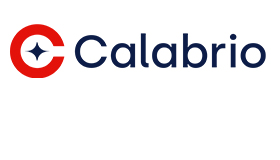Richard Pinnington of Calabrio discusses how workforce management means so much more in challenging times.
“It was the best of times, it was the worst of times,” these immortal words are probably as true today as they were when Charles Dickens wrote a A Tale of Two Cities nearly 200 years ago. Calabrio have seen how COVID-19 has triggered extreme opportunities and challenges for contact centres.
Many team leaders have become ‘mother hens’ to their work-at-home agents, caring for their wellbeing and motivation.
However, those organisations reluctant to let go of their on-premise infrastructures have struggled to cope with a massive influx of calls, channel shift, heightened customer expectations and disruptions to team availability.
Beware of Spreadsheets and Long Live Strategic Resource Planners
Workforce Management (WFM) has come to mean so much more in 2020. Despite a wealth of business continuity and disaster recovery plans, the current health crisis has revealed just how much some businesses have overlooked the importance of the planning function.
In the awful event of a key planning individual becoming ill and that person being the only one who understands how the master forecasting and scheduling spreadsheet works, the entire contact centre is at risk.
WFM tools that provide complete resource planning visibility and agility are now even more invaluable.
WFM: From Survive to Thrive in 3 Easy Steps
It’s time to use the all-round benefits of WFM to ensure your contact centre thrives:
1. WFM for Flexibility in Uncertain Times
Contact centres today need to strike a balance between managing their virtual teams and preparing for agents who wish to return to the office. This brings a new set of challenges.
Workstations have to be cleaned down between shifts, staggered start-times are critical to ensure there is no gap between shifts ending and new ones beginning.
There is also the new concept of ‘work support bubbles’ which mean that if there is a positive COVID test in one of the bubbles, contact with other team members (and shifts) can be limited and properly controlled without impacting service levels.
One positive outcome of the pandemic is that contact centres are being more creative with scheduling. Planners are experimenting with new types of shifts such as micro-shifts that are great for home-working.
Mid-day humps or overlap with day/night shifts are easier to avoid. However, flexibility remains key. Are agents in the right place at the right time? Are they scheduled against a constantly-changing forecast?
Do schedules build in extra time for agents to take care of family or other domestic issues? Are you adding a higher shrinkage to forecasts to compensate for larger numbers of technical issues as agents transition to home-working or physically move between shifts after workstation deep-cleans?
Moving to a cloud-based WFM application gives supervisors and resource planners the control and visibility they need when teams are working remotely. They also provide the perfect solution when preparing for agents to return to the office.
2. The Perfect Business Case and the Perfect Time for WFO
In addition to adding agility to scheduling and forecasting, deploying an automated WFM solution that encompasses the full range of workforce optimisation (WFO) capabilities can address the key operational and engagement issues for virtual and office-based teams.
By Calabrio’s own calculations, organisations can expect to achieve tangible ROI from a WFM implementation in less than 6 months. Some customers have achieved savings in excess of 30% through accurate scheduling, while results in excess of 95% schedule adherence are commonplace.
Other customers have reported an 18% average reduction in contact centre agent churn where flexible shifts are in place, while overtime costs can be reduced by as much as 20% when scheduling staff to their preferred hours.
3. Workforce Engagement Management (WEM) for Greater Agent Wellbeing
Calabrio have seen how 2020 has emphasised a transition in the use of workforce optimisation (WFO) tools, such as WFM, call/screen recording, speech/text analytics, quality and performance management and advanced reporting that are often associated with maximising the productivity of frontline staff.
These applications now include features and functions that recognise the value and wellbeing of employees, as well as the associated impact on customer experience (CX). It’s an evolution of WFO to WEM.

Richard Pinnington
Paying attention to the emotional health of frontline staff is a top priority. Although home working is here to stay, the simple truth is that many contact centre agents don’t have a home environment that is conducive to work, and being natural communicators, many miss the human contact of the office.
Fortunately, the latest WEM solutions cover the complete employee lifecycle from recruitment to onboarding, coaching to e-learning, team communications to interactions, task assignments to performance targets, gamification to acknowledgment and reward.
Make the most of WEM capabilities to engage and motivate agents through self-service technology that helps puts people in control of their working lives and with flexible schedules that accommodate the stresses of remote working.
For more information about Calabrio - visit the Calabrio Website
Call Centre Helper is not responsible for the content of these guest blog posts. The opinions expressed in this article are those of the author, and do not necessarily reflect those of Call Centre Helper.
Author: Calabrio
Published On: 15th Dec 2020
Read more about - Guest Blogs, Calabrio






 The digital foundation of a customer-centric contact centre, the Calabrio ONE workforce performance suite helps enrich and understand human interactions, empowering contact centres as a brand guardian. Calabrio ONE unites workforce optimisation (WFO), agent engagement, and business intelligence solutions into a cloud-native, fully integrated suite.
The digital foundation of a customer-centric contact centre, the Calabrio ONE workforce performance suite helps enrich and understand human interactions, empowering contact centres as a brand guardian. Calabrio ONE unites workforce optimisation (WFO), agent engagement, and business intelligence solutions into a cloud-native, fully integrated suite. 




























